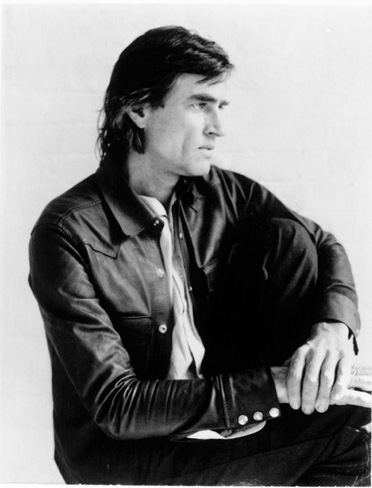Robert Mapplethorpe is a household name, known for his stunning and often erotic black and white photography. His lifetime lover and patron Samuel Wagstaff is much less known. That may change now with the publication of a new book.
Philip Gefter, who was on staff at The New York Times as its picture editor for fifteen years has just written a comprehensive and scholarly biography entitled Wagstaff: Before and After Mapplethorpe; Gefter presents Wagstaff as a leonine figure with an indelible influence on late-twentieth century art. Gefter's thesis is that Wagstaff was the father of the metamorphosis of photographs into expensive museum quality art.
By all accounts, Wagstaff was a fine physical specimen of a man.
Tall with high cheekbones and transcendentally handsome, he was named as one of New York's most eligible "bachelors" in the 1950's. Borne of a patrician family that owned part of the land that became Central Park, educated at Hotchkiss and Yale, he strayed from high society and became a sandaled, beaded and pot-smoking hippy in the 1960's.
After a hateful boring stint at a Mad Men-type advertising firm, Wagstaff eventually found his true calling and became a collector and curator of fine art. He easily surrounded himself with such luminaries as John Cage, Merce Cunningham, Robert Rauschenberg, and Ray Johnson, all of whom happened to be gay and lived in Greenwich Village. Years after Wagstaff facilitated the acquisition of an Andy Warhol masterpiece, he said "Andy Warhol is for me one of the greatest artists of the twentieth century. I think Campbell's Soup Can is, undoubtedly, up to now, the single greatest image in art painting as we know it at this moment."
In 1972 the then-fifty-year-old Wagstaff met his lifelong protege Robert Mapplethorpe, a skinny street urchin from Queens, New York who was half his age. They were both born on November 4th exactly twenty five years (a generation really) apart. The aspiring photographer had been living with the poet and rock star Patti Smith at the time in the Chelsea Hotel.
Wagstaff affectionately referred to his young lover as "my sly little pornographer."
The A-list diabolical power couple became ensconced in the demimonde of orgiastic sex and party drugs who lived in a crazed pursuit of erotic sensation while simultaneously seeking aesthetic perfection.
In 1984, Wagstaff sold his collection of photographs to the J. Paul Getty Museum for 5 million dollars. At the very end of his life between 1984 and 1987, Wagstaff turned his obsession from collecting photographs into an obsession for collecting silver. A short time before his death, he was observed on the streets of downtown Manhattan as an "an old man with AIDS dragging plastic bags of silver."
Wagstaff remained enamored of Mapplethorpe until the bitter end. By the mid 1980s both men became infected with HIV and died from AIDS complications two years apart. A short time before his death he told Patti Smith "I have only loved three things in my life---Robert, my mother and art."
Gefter's smart, sexy and eloquent biography of this commanding arbiter of taste and culture serves as a definitive and memorable portrait of last century's intersection of gay life and the evolution of the hobby of photography into a way of producing collectible fine art.



